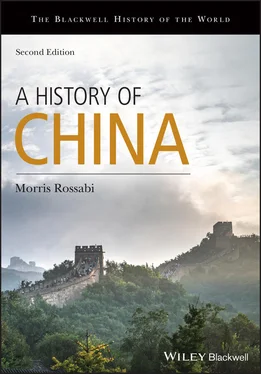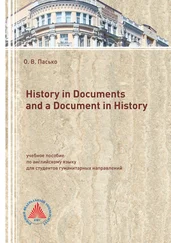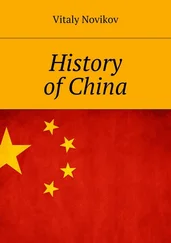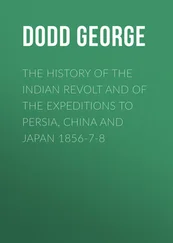The editor is grateful to all of the contributors to the Blackwell History of the World for advice and assistance on the design and contents of the series as a whole as well as on individual volumes. Both editor and contributors wish to place on record their immense debt, individually and collectively, to John Davey, formerly of Blackwell Publishers. The series would not have been initiated without his vision and enthusiasm, and could not have been realized without his energy, skill, and diplomacy.
I have deliberately titled this book A History of China . It is not The History of China . In fact, such an all-encompassing book has not been and probably will never be written. Chinese history is beyond the scope of a single volume. In this work, much in the history of China has been omitted, partly due to size restrictions. I have tried to replicate the course on Chinese history I have taught at a variety of universities. However, I have left out some anecdotes and have eschewed documentary overkill. I have had to select from a vast array of political, economic, social, and cultural developments.
Yet this work offers a survey of Chinese history, with one innovation. The basic events and trends are described, but I have emphasized China as part of a larger world, starting with its contacts with its neighbors in early times and stretching to west, south, and southeast Asia, Korea, and Japan in later eras. From the Mongol age in the thirteenth century onward, I portray China in the context of global developments and history. Specific Chinese policies and practices can be understood as, in part, responses to foreign influences. Indeed, non-Chinese peoples have ruled China for almost half of its history since 1279, the date the Mongols crushed the Southern Song dynasty. In the past, some histories depicted the Mongol and Manchu rulers who governed China during that time as typical Chinese potentates and their people as highly sinicized. This history and many recent scholarly studies have challenged that interpretation, and I devote more space than most texts to describing Mongol and Manchu societies and analyzing their impact on China. In addition, since 1279, China has had a significant non-Chinese population, mostly along strategic frontier areas. Again, I have emphasized these peoples’ histories in this book, often devoting more space to the subject than almost all other histories of China.
Such emphases on China in global history and on the non-Chinese population living in the country have not been my sole perspective. To be sure, many developments in China generally reflected internal events and were not responses to foreign pressures or stimuli. Chinese officials, military commanders, artists, scientists, and philosophers most often reacted to indigenous political or cultural challenges. Yet China and the Chinese were not isolated; they had contacts with foreigners adjacent to their lands, and the Mongol Empire linked them with Eurasia (a connection that was never truly severed). Events and trends in other parts of Eurasia – and indeed in other parts of the world – have influenced China. Similarly, developments in China occasionally reverberated in Europe, west Asia, the Americas, and, to an extent, Africa. Such external impacts did not necessarily determine the course of events or the development of discoveries or ideas. Yet a conception of China from a global perspective provides unique insights. Consideration of domestic causes of events in Chinese history will be of primary concern, but, unlike many other appraisals of Chinese society, a new global perspective, capitalizing on recent research, will also be presented and will, I trust, add to the understanding of Chinese history.
On another note, even within the country, there have been many different Chinas. China’s population has long been sizable and the territory under its control substantial. In traditional times, various regions faced numerous obstacles in transport and communications. Thus, different parts of the country and different peoples had differing values and differing histories. A peasant in Sichuan, an official in the city of Changan (modern Xian), a merchant in the city of Quanzhou, and a woman in a remote village in Gansu all had different histories.
Until the late nineteenth century, the elite produced nearly all the written sources, which described the lives, activities, concerns, and values of a single group of people who derived from the same social background. They hardly portrayed other groups of Chinese. Peasants, the vast majority of the population, barely appeared in these texts. Women also received short shrift, and only through painstaking perusals of numerous texts have scholars begun to piece together aspects of their roles in Chinese history. Confucian officials, who wrote most of the histories, relegated merchants and artisans to a lowly social status and scarcely mentioned them in historical accounts; thus, information about these two groups is limited. The available sources are not as multidimensional and diverse as historians would like. Scholars have used the briefest of mentions in texts and material remains to offer a glimpse of the lives and roles of merchants and artisans. Nonetheless, until changes in nineteenth-century Chinese history, most sources, both written and visual, center on the careers and roles of the imperial families and officials. The reader needs to bear this in mind in reading this book.
A historian would find that traditional Chinese historical texts portrayed Confucianism as the system of values governing personal relations and the philosophical view that shaped people’s lives. Yet he or she could wonder whether popular religions played as important or greater roles for the ordinary Chinese. However, little is known about popular religions in certain eras of Chinese history because of the nature of the sources. Such religions were generally the province of ordinary Chinese, nearly all of whom were illiterate. Written texts that described these religions have, by and large, not survived (if they existed in the first place). Because the elite embraced Confucianism, wrote extensively about it, and appear to have led lives shaped by it, historians may assume that it was pervasive because the surviving texts portray it as such. This may not have been the case for ordinary people.
I have chosen to organize this history based on the various dynasties of China. I realize, of course, that changes in dynasties do not necessarily coincide with or reflect transformations in society and economy, cultural and ideological patterns, technological and scientific knowledge, or other equally significant developments. I am aware that a Japanese scholar has divided Chinese history in two, arguing that dramatic changes in the eleventh and twelfth centuries ce changed the course of Chinese society. Other historians have adopted a variety of schemes for the periodization of Chinese history, including a disputed one centering on China’s response to the West. I have referred to some of these interpretations, describing them while also alluding to crucial assessments and critiques of these theories. However, in many years of teaching, I have found that students are better able to grasp the fundamentals of Chinese history through the lens of dynasties. Because this book is aimed at students and the nonspecialist reader, the dynastic approach appears to be less confusing and more optimal for a work of this kind.
Despite this choice, I do not subscribe to the concept of the dynastic cycle, a traditional and stereotypical paradigm of Chinese history. Advocates of this theory assert that a dynasty’s first rulers were honest, courageous, and powerful and cared for their people, creating conditions of prosperity and longevity, but that the later rulers were oppressive and corrupt and were unconcerned about their people, leading to decline and increasing chaos. This approach does not jibe with actual events and overemphasizes the roles of the emperors and the courts in shaping the history of China. Another misconception that arose from the dynastic-cycle paradigm was an idea of the insignificance of eras that lacked either strong dynasties or dynasties that ruled over all of China. Periods of decentralization were equated with chaos and no important cultural innovations. Yet Confucianism, Daoism, and other philosophies of a golden age of classical thought developed in precisely such an era – known as the Warring States period – and Buddhism flourished after the collapse of the great Han dynasty and before the Sui and Tang dynasties restored centralized government in China. Suffice it to say that I use “dynasties” as the organizational scheme for the reader’s convenience and ease.
Читать дальше












